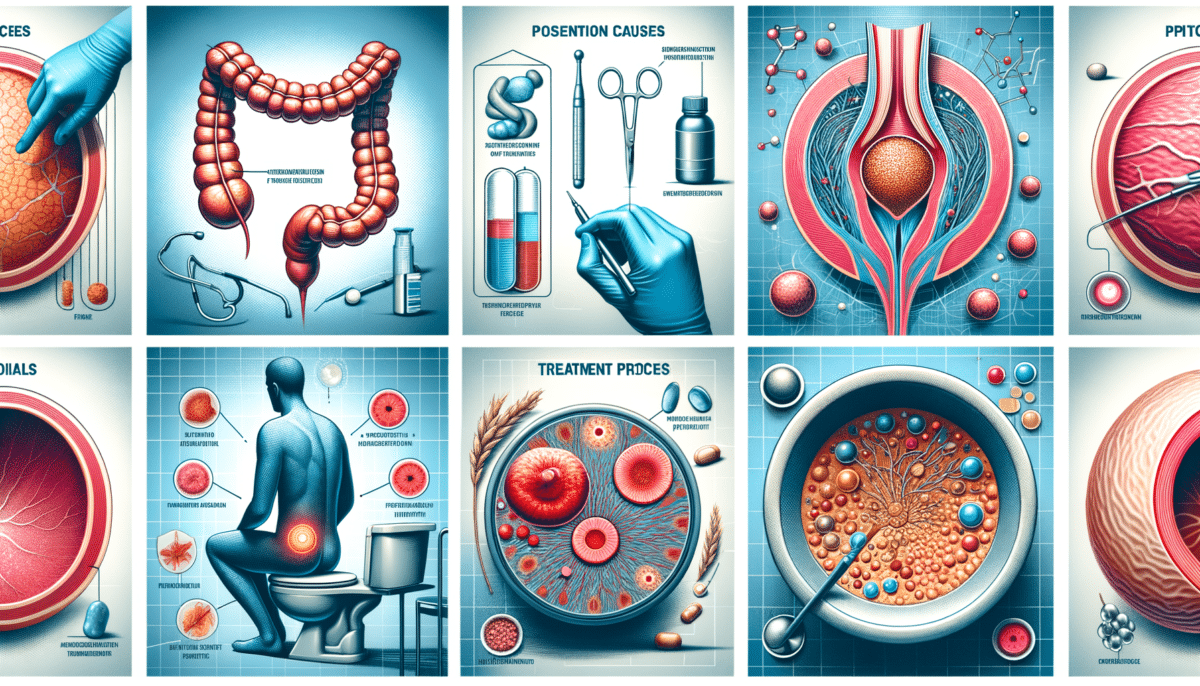Understanding Hemorrhoids: A Brief Overview
Hemorrhoids, also known as piles, are swollen veins in the lowest part of the rectum and anus. Sometimes the walls of these blood vessels stretch so thin that the veins bulge and get irritated, especially when you have a bowel movement. Hemorrhoids are quite common, affecting millions of people worldwide. They can occur inside the rectum (internal hemorrhoids) or under the skin around the anus (external hemorrhoids). The condition can cause discomfort, itching, and sometimes bleeding. Understanding the nature of hemorrhoids is the first step toward addressing the discomfort they cause.
Hemorrhoids are often associated with straining during bowel movements, obesity, or pregnancy. However, they can also result from chronic constipation or diarrhea, sitting for long periods, or a low-fiber diet. While they are common, many people feel embarrassed to seek help, which can lead to unnecessary suffering. It’s important to note that while hemorrhoids can be painful, they are not life-threatening and can often be managed with lifestyle changes and over-the-counter remedies.
Non-Surgical Treatments for Hemorrhoids
For many individuals, non-surgical treatments can provide significant relief from hemorrhoid symptoms. Lifestyle modifications, such as increasing fiber intake and staying hydrated, can help soften stools and reduce the need to strain during bowel movements. Over-the-counter remedies like creams, ointments, and suppositories can also alleviate symptoms like itching and pain.
Another effective non-surgical option is rubber band ligation, where a small rubber band is placed around the base of an internal hemorrhoid to cut off its blood supply. This causes the hemorrhoid to shrink and eventually fall off. Sclerotherapy, which involves injecting a chemical solution into the hemorrhoid tissue to shrink it, is another alternative. Both procedures are minimally invasive and can be performed in a doctor’s office.
For those seeking natural remedies, options include sitz baths, which involve soaking the affected area in warm water, and the application of witch hazel or aloe vera to reduce inflammation. These treatments can be particularly beneficial when used in conjunction with dietary changes.
Surgical Options for Hemorrhoid Treatment
When non-surgical treatments fail to provide relief, or if hemorrhoids are particularly large or painful, surgical options may be considered. Hemorrhoidectomy, the surgical removal of hemorrhoids, is one of the most effective treatments for severe cases. This procedure is typically recommended for individuals with large internal hemorrhoids or those with external hemorrhoids that cause significant discomfort.
Another surgical option is hemorrhoid stapling, also known as stapled hemorrhoidopexy. This procedure involves the use of a stapling device to remove a portion of the hemorrhoid tissue and reposition the remaining tissue within the anal canal. This technique is less painful than a hemorrhoidectomy and has a quicker recovery time, but it may not be suitable for all patients.
While surgical options can be highly effective, they are typically considered only after other treatments have been explored. It’s crucial to discuss the benefits and risks of each procedure with a healthcare provider to determine the most appropriate course of action.
Preventative Measures and Lifestyle Changes
Preventing hemorrhoids involves making certain lifestyle changes that can reduce the risk of developing this condition. A diet high in fiber, including fruits, vegetables, and whole grains, can help prevent constipation and promote regular bowel movements. Drinking plenty of water is also essential to keep stools soft and easier to pass.
Regular physical activity can help prevent the development of hemorrhoids by reducing pressure on the veins in the lower rectum. Activities such as walking, swimming, or yoga can be particularly beneficial. Additionally, avoiding prolonged sitting, especially on the toilet, can reduce the risk of hemorrhoid formation.
It’s also important to listen to your body and respond promptly to the urge to have a bowel movement. Delaying can lead to harder stools and increased straining, which can contribute to hemorrhoid development. By incorporating these preventative measures into daily life, individuals can significantly reduce their risk of experiencing hemorrhoids.
When to Seek Medical Advice
While many hemorrhoid cases can be managed with home remedies and lifestyle changes, there are instances when medical advice is necessary. If symptoms persist despite treatment, or if there is severe pain, bleeding, or a noticeable change in bowel habits, it’s important to consult a healthcare provider. These symptoms could indicate a more serious condition, such as colorectal cancer, that requires prompt attention.
During a medical consultation, a doctor can perform a physical examination and may recommend additional tests, such as a colonoscopy, to rule out other conditions. They can also provide guidance on the most appropriate treatment options based on the severity of the hemorrhoids and the individual’s overall health.
It’s essential to overcome any embarrassment and seek professional medical advice when needed. Timely intervention can prevent complications and improve quality of life, ensuring that individuals can manage hemorrhoids effectively and comfortably.
